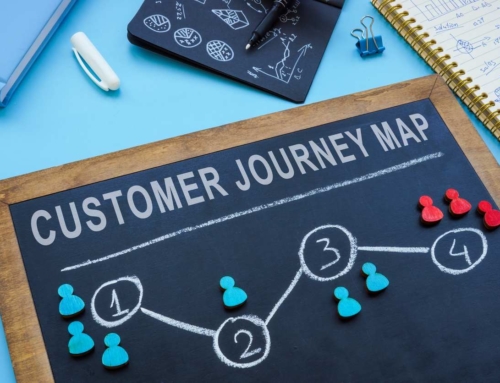Your Guide to Critical Sales Pipeline Stages

Every customer starts out as a humble prospect, and your sales pipeline defines their journey from one side to the other. Creating intentional pipeline stages will help your sales department run more smoothly and turn more leads into customers at a quicker rate. Here’s how it all works.
Pipeline Stages
Sales pipelines may vary a bit depending on the industry, size of the business, or sales approach. But there are some stages that are essential to the success of any sales process. Here are 7 basic steps to a sales pipeline.
1. Lead Generation
Lead generation is the first step to any sales process, and it’s something that must be done constantly in order to maintain the rest of the pipeline. If you’re not able to set aside time for finding new leads every day, consider outsourcing lead generation to a qualified third party.
2. Nurturing Leads
It’s not enough to find new leads—most leads require some nurturing before they move along to the next stage of the pipeline. Foster a good relationship by checking in regularly and reviewing your past interactions.
3. Qualification
If you’re not qualifying your leads, you’re probably wasting a lot of your valuable time on leads that aren’t going anywhere. Make the most of your time by getting to know your leads through email, phone calls, and background research.
4. Identify Decision Makers
Take your qualified leads to the next level by identifying the key decision-makers within the organization. By finding out who has the power to make the purchase, you’ll know who to keep in mind when crafting your proposal.
5. Proposal
You’ve found your lead, nurtured the relationship, and narrowed in on the decision-makers. Now it’s time to make your pitch. Create a thorough, customized proposal to better your chances of closing the deal and making a bigger sale.
6. Negotiation
Even if you’ve sold the prospect on your product, most proposals are followed up with a negotiation stage. At this point, there will be some give and take, and it’s important to balance customer satisfaction and your sales goals.
7. Closing
Whether you’ve landed a deal or have a lead that’s decided to pass on your product, the closing stage is an opportunity to further foster your relationship. Send a thank you as soon as you close the deal or check-in after a month with the prospects that didn’t go for the deal.
How to Build an Efficient Sales Pipeline
You may already have a sales pipeline, but is it an efficient one? The most successful businesses have a thriving pipeline that takes the customer journey into account, includes performance metrics, and uses tools for constant improvement.
1. Create an Ideal Customer Profile
Can you picture your ideal customer? If not, it’s time to hit the drawing board and think about what your ideal customer looks like. How old are they? Where do they work? How much schooling do they have? Zero in on these details and keep them in mind as you build your sales funnel.
2. List the Stages of the Sales Cycle
If you’re starting from scratch with your sales funnel, it’s important to talk to your top sellers about how they operate. Use their insight to build a funnel that can be applied to your entire sales team.
3. Set a Sales Process
Once you’ve analyzed what’s working with your brightest sales team members, it’s time to adopt that sales process across the board. Explain the process to your sales team and make sure your CRM or other automations work in harmony with each stage.
4. Choose Metrics
Your sales funnel will really thrive when you’re measuring it up against the right performance metrics. Think about your priorities and select your top metrics to monitor your progress. Use this information to improve the sales funnel over time.
5. Set Goals
No sales funnel will ever be perfect, but it’s important to set goals to keep your sales team from stagnation. Make sure your team is on board with these goals, and incentivize them to reach the goals by offering cash rewards and other perks.
Sales Pipeline Best Practices
Every business has its own list of sales pipeline best practices, but there are a few principles that stand true for any company. Here are some important things to keep in mind as you improve your sales stages.
1. Create a Pipeline Monitoring Schedule
Having goals and metrics is one thing, but it’s also vital that you set a schedule for monitoring the pipeline. Set a timeline for when you want to reach your goals, and create reports at regular intervals so you can accurately track your progress over time.
2. Get Total Pipeline Visibility
There’s a wealth of information hiding in your sales pipeline, but you might not be able to find it if you don’t have total pipeline visibility. For that visibility, you may need a software platform to analyze and organize your sales data, if you don’t have that capability in your sales or CRM software. Choose a platform that includes a dashboard with all the features you need to keep a pulse on your pipeline at all times.
3. Keep Accounts Updated
Too many sales pipelines are full of stale accounts and dead leads. This clutters the pipeline and makes it harder for your sales team to focus on the highest quality leads. Avoid the issue by keeping account details up to date.
4. Prioritize Deals With the Highest Value
The faster your sales cycle, the more you’ll be able to increase your bottom line. Hence, it’s in your best interest to focus on deals that offer the highest value to your company.
5. Identify Weaknesses
Even the best sales team will have some individual sellers who need extra support in order to reach the goals you’ve set for your pipeline. Identify the weak links early on and work hard to give them the resources they need to have success.
Improving Your Pipeline
With a better understanding of pipeline stages and sales pipeline best practices, it’s time to create one for your business (or improve your existing pipeline). Focusing on your pipeline will allow you to increase the speed of your sales cycle, get a steady flow of new leads, and close high-value deals more often.





![How To Get Leads for Insurance Sales [6 Best Methods]](https://roicallcentersolutions.com/wp-content/uploads/2021/06/iStock-1207861941-500x383.jpg)
